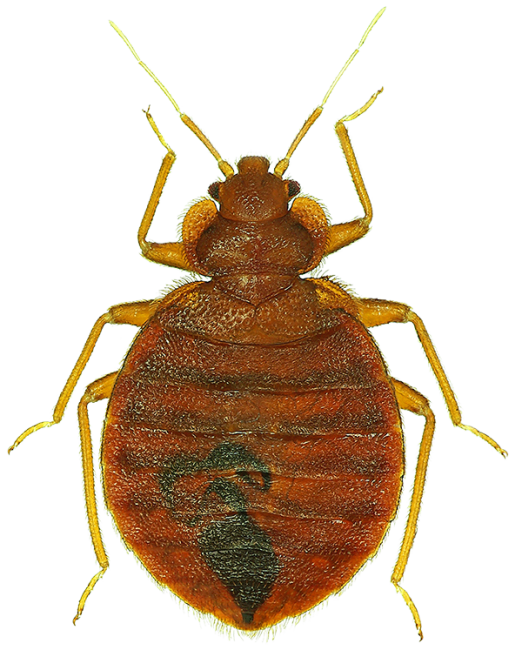
BED BUGS
The kids are out of school, so you take a vacation and stay at a hotel. So does EVERYONE else. The peak season for bed bugs is June through October. The increase in heat and humidity during the summer and early fall months has the effect of making bed bugs more active. Make sure you check the beds in the hotel rooms as well as your own beds at home just to be safe.
How to spot signs of bed bugs:
- Look for rusty or reddish stains on bed sheets or mattresses caused by bed bugs being crushed.
- Dark spots (about this size: •), which are bed bug excrement and may bleed on the fabric like a mark
er would.
- Eggs and eggshells, which are tiny (about 1mm) and pale yellow skins that nymphs shed as they grow larger.
- Live bed bugs.
Where bed bugs hide:
When not feeding, bed bugs hide in a variety of places. Around the bed, they can be found near the piping, seams and tags of the mattress and box spring, and in cracks on the bed frame and headboard.
Preventing bed bugs:
At home, try not storing your luggage under your bed. Ideally, luggage should be stored in a basement or garage. Other tips include decluttering your home, vacuuming more often and keeping belongings separate when taken to school or work.
HEAT RASH
With our high temperatures in Southern California, heat rash can be a very common, yet real concern. If you sweat enough, your sweat glands can actually get blocked, and the excess moisture can cause skin irritation, itching, and redness. The best way to prevent this from happening is by staying cool. Drink plenty of cool water, wear light clothing that breathes, and try to avoid staying in the sun for too long. If you do see signs of heat rash, cool your body (in an air conditioned place or with a fan) or take a cool shower and let your body air dry. Do not use any oil based lotions because you don’t want to block your sweat glands. Heat rash should self-resolve within a few days.
FOOD POISONING
When food is left in the heat for an extended periods of time, bacteria grows. Food poisoning is more common during the summer because the microorganisms that cause it grow most quickly when the temperature is between 90 and 100 degrees. Nearly 300,000 people are hospitalized annually due to food poisoning. Make sure your food stays in a cool place while on the beach or picnicking. Use extra care to foods that contain mayonnaise, dairy, eggs or meat products. Keep them cool because they can start to develop bacteria within several hours of being unrefrigerated.
Food poisoning symptoms:
Symptoms of food poisoning include upset stomach, abdominal cramps, nausea and vomiting, diarrhea, fever, and dehydration. Symptoms may range from mild to severe.
SWIMMER’S EAR
Ear infections can be really painful and can keep you out of the pool and ocean. No one wants that during the summertime! It’s often caused by water remaining in the ear after you go swimming. This can create a moist environment inside the ear, which helps bacteria to grow. The best way to avoid swimmer’s ear is to avoid immersing your head entirely in the water, or if you do, do not go too deep. You can also try wearing earplugs. Do NOT use Q-tips or cotton swabs to clean your ears, this will make it worse. In most cases, a doctor will prescribe ear drops and be advised to keep the ear dry.
The information provided is for general interest only and should not be misconstrued as a diagnosis, prognosis or treatment recommendation. This information does not in any way constitute the practice of medicine, or any other health care profession. Readers are directed to consult their health care provider regarding their specific health situation. Marque Medical is not liable for any action taken by a reader based upon this information.


